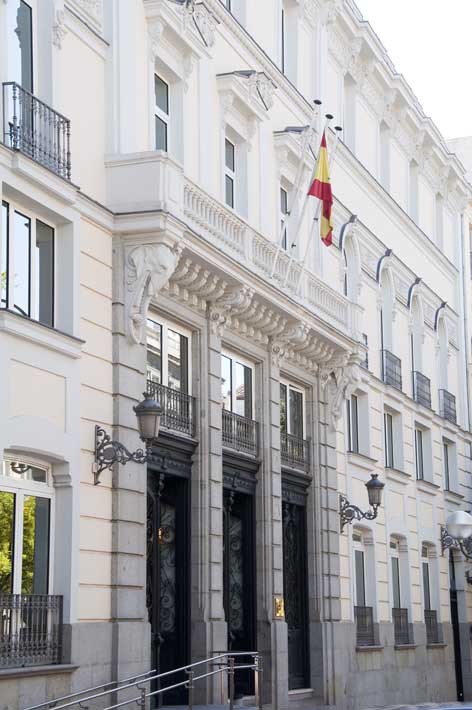History of the CGPJ
![]() Labels:
judicial system, CGPJ
Labels:
judicial system, CGPJ
The General Council of the Judiciary was set out in the 1978 Constitution (Article 122), following the model of other neighbouring countries such as France, Portugal, and Italy, in particular. Its creation was then a true innovation of the Spanish constituent, since it is impossible to find any direct precedent in our history of an autonomous government organ of the Judiciary which guarantees the independence thereof.

In the history of Spain, there are some remote precedents of institutions and attempts to create an organ which would guarantee the auto-government of the Judiciary, at least partially, however, none of these attempts had the same nature and aim as the General Council of the Judiciary. Especially because an organ of such type only finds its true raison d'être within a democratic system, based on the separation of powers and the effective protection of the fundamental rights and freedoms of the persons.
Among these remote precedents there are the Central or Supreme Board (1849), the Organising Board of the Judiciary (1923) or the Judicial Council, created pursuant to the Royal Decree dated 18 May 1917, although it never started to work as it was revoked in July of the same year. It was re-established in June 1926, to be revoked in May 1931. None of these examples was a precedent stricto sensu. Neither was the Judicial Council created pursuant to the Act dated 20 December 1952, which worked until the implementation of the democratic constitutional system.
The Spanish constituent was influenced by the French Constitution of 1946, which regulates the High Council of Judicature in accordance with the provisions of Title IX. It constituted the precedent for the remaining organs with similar aims, set out later in the Italian Constitution of 1947 (pursuant to Articles 104 and 105), and in the Portuguese Constitution of 1976 (Article 220). The Italian model has been imported by the first Parliament in its fundamental aspects, with exception of its components, which, in the Spanish case, was set out in the Constitution.
The statutory development of the constitutional provisions has taken place through the Organic Act on the Judiciary mentioned in the Carta Magna. However, first the Organic Act 1/1980, dated 10 January, on the General Council of the Judiciary, due to the need to make the Constitutional Court operational, since two of its members should be appointed on a proposal by the General Council of the Judiciary, in accordance with the Constitution (Article 159.1). Subsequently, the Organic Act 6/1985 on the Judiciary, dated 1 July, was enacted, whereby the Council was definitely regulated, thus repealing the Organic Act of 1980, and which implied a change in the form of appointing the members with a judicial background. This system was reformed in 2001.
The Organic Act on the Judiciary in turn has undergone some subsequent partial reforms through the Organic Acts which, in some cases, have been enacted for that purpose, and in others, they affected said Organic Act due to the subject-matter (Military Jurisdiction, Tribunal of the Jury, etc.).
The General Council of the Judiciary is governed by the Constitution, the Organic Act on the Judiciary, and by its own internal regulations: The Regulations 1/1986, dated 22 April, on the Organisation and Operation of the General Council of the Judiciary, the approval of which is incumbent upon the Council.
The Spanish model has been a reference for the creation of similar constitutional organs in Latin America, especially in Argentina.